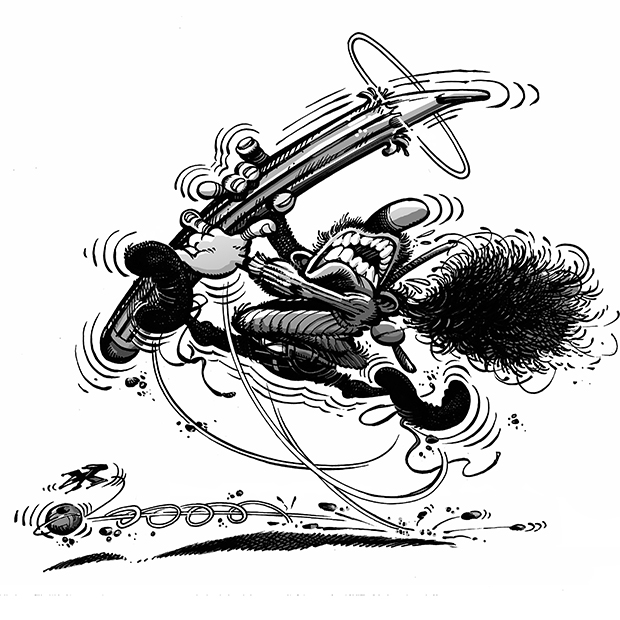
Click to enlarge
But today we collect Gags [and gigs, and schticks]
Gropius wrote a book on grain silos,
Le Corbusier one on aeroplanes,
and Charlotte Periand brought
a new object to the office every morning,
But today we collect ads.[i]
Today (today), Rem Koolhaas writes big fat books and reinvents OMA each ten years in a different exhibition, and Bjarke Ingels recounts the 8 House to us conjuring a virtual model in the air while speaking to the camera. Nic Clear evokes the spaces suggested by Ballard in videos created in the Bartlett workshops, and Factory Fifteen win the RIBA medal with a short film on androids of the Apartheid. Architecture and fiction, again.
And comics. A decade before, Koolhaas (and son) rediscovered one more time (for architecture) the underground appeal of drawn stories, and Neutelings appropriated the graphic patterns of a certain Swarte (or perhaps Eddy Vermeulen’s) due to their inherent conceptual transparency. Today, Jimenez Lai published a graphic novel under the Princeton Architectural Press seal, and Yes is More or Metro Bassel signify the drift of architecture -a discipline traditionally burdened by its obsession with distancing itself from anything that could question its intellectual pedigree- towards the uncertain terrains of ars poverae and cool, of marketing and circus-like mediatic massage.
(… but -I am told- Le Corbusier also did storyboards for buildings in the 1920s, and before that he had already adopted the graphic conventionalisms of American cartoons. And even earlier, he flirted with the idea of writing a doctoral dissertation on the comic strips of Rodolphe Töpffer, the Swiss father of the bande dessinée…)
Jeanneret was a fertile and feverish communicator, too; like Loos, an active polemist; like Mies, a skilled coiner of catchphrases and mottos. The journey is, some they say, in how you tell it, and if architecture has nowadays a passionate affair with communication, this is nothing new, anyways. Today (the day before yesterday, at the latest), Rem Koolhaas poses impeccably dressed as the cover image of Vogue, while he plays confusion with his audience, displaying a discourse in permanent -and studied- contradiction. But long before that, Corbusier (that early Koolhaas impersonator) already understood that his main role was that of the publicist who could as well photograph himself painting nude in Saint Tropez, or rebuild his own history over and over again in the consecutive editions of his Oeuvre Complete. Architecture, and starchitecture, is in how you tel it, yes, and its legend gets built through grand discourses, but also in small talk, gossip and small miseries, through a mouth-to-ear that current informational ubiquity has augmented exponentially. Today, information is bigger, and bigger are the chances for media presence; but a more ephemeral one. That’s why the flux has to keep coming; the flux of images, publications and conferences, of debates, but also of opinions and minutiae, of Facebook walls and tittle-tattle.
Because today, we collect gags.
[i] Alison&Peter Smithson: “But Today We Collect Ads”. Ark magazine No. 18, November 1956.
“But today we collect gags”, originally published in the e-book “The Importance of the Ways Stories are Being Told” (dpr-Barcelona, June-July 2012) after the debate of the same name, and cracked during a train trip to Barcelona. Anyone who has read the similarly-themed “Tell Me More!” or “Modern Talking” will notice the recurrences and overlaps. [Also, the above image doesn’t have much to do with the text itself, just with the title, but…]


Leave a comment